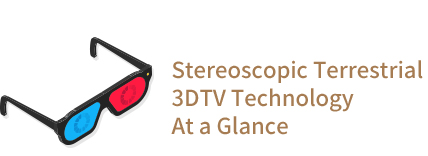
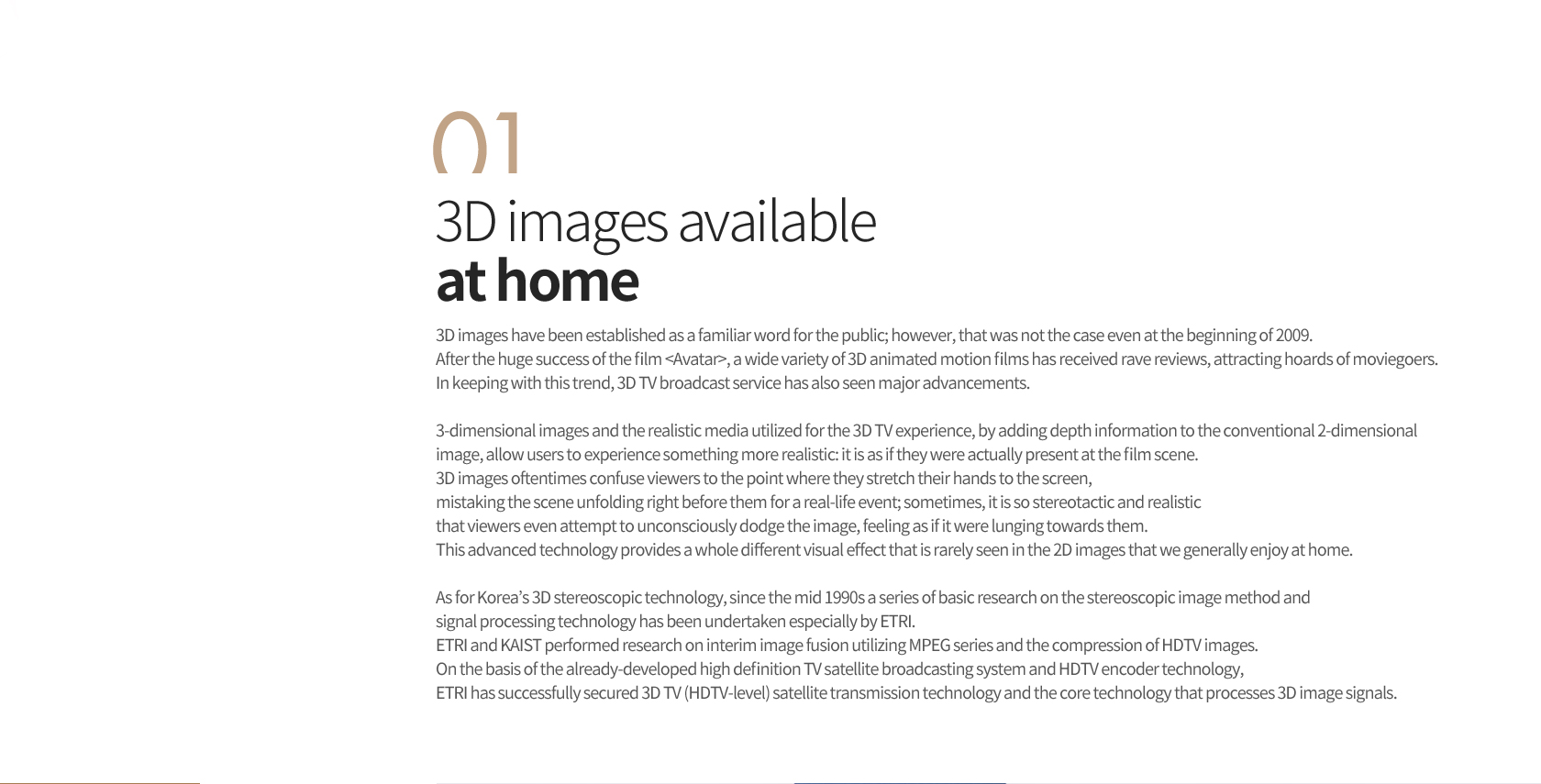
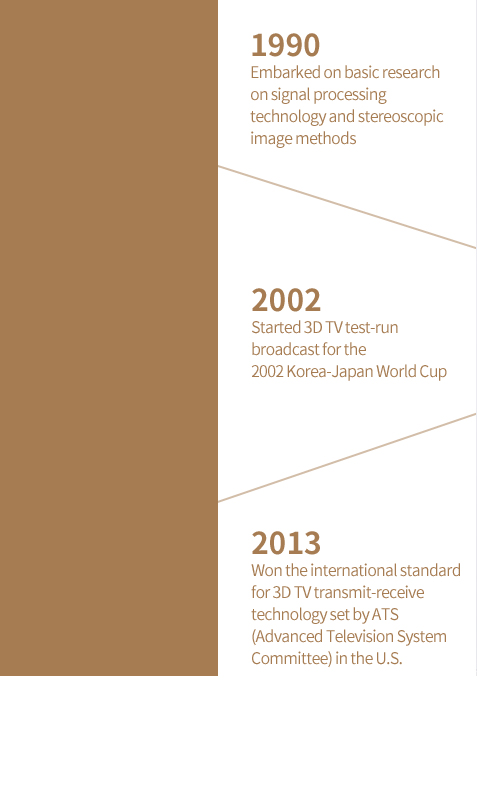

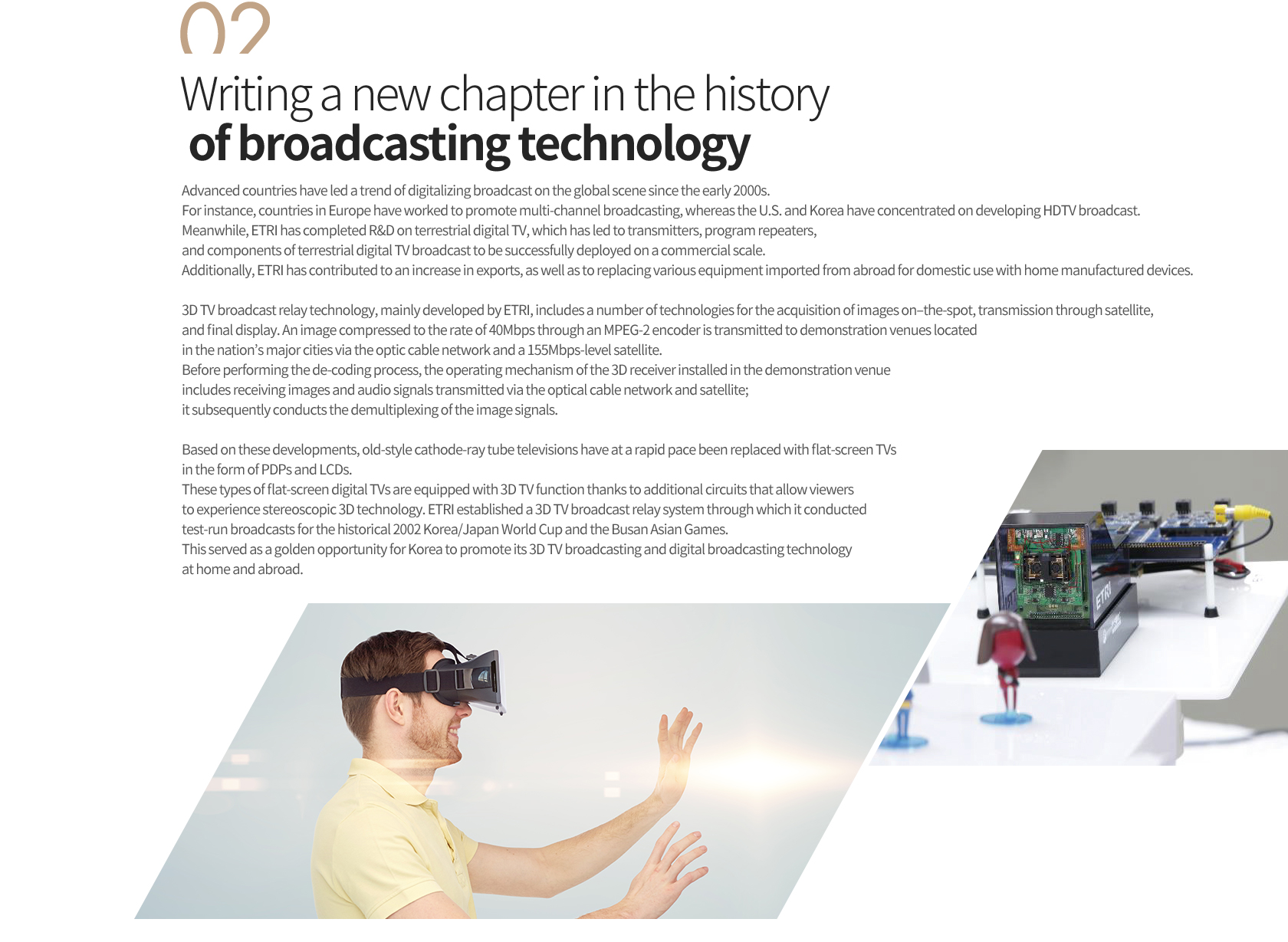
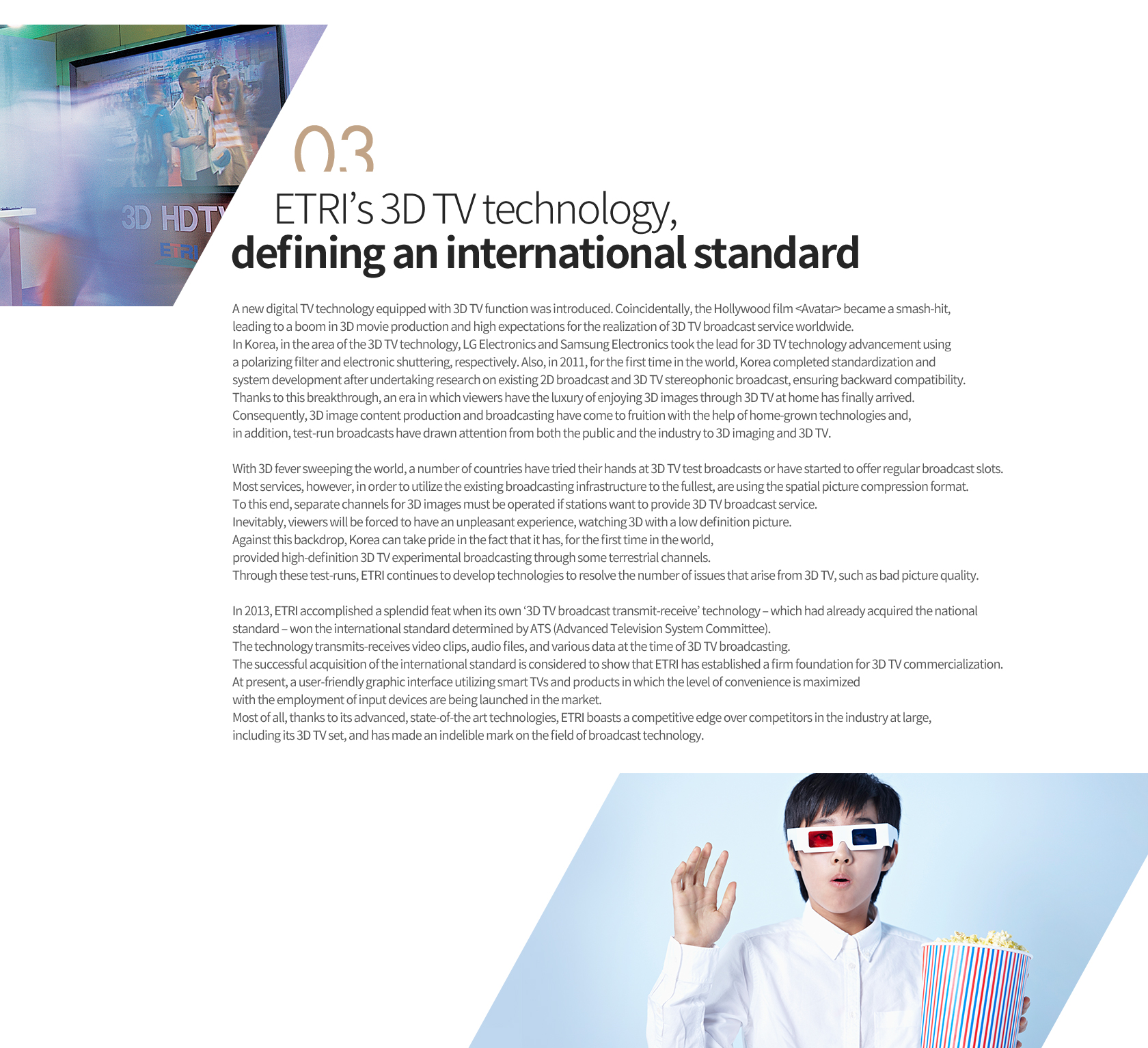


Leading the world with stereopsis
3D TV technology available at home
3D images and 3D TV were rather unfamiliar terms even at the beginning of 2009. At present, however, not only do people get to enjoy 3D images in the theater, but they also watch 3D TV with special glasses at home. Thanks to the technological developments made by ETRI, Korea has presented 3D TV experimental broadcasting for the first time in the world; further, due to the number of attempts it has made ahead of other countries, Korea has seen an outstanding accomplishment in related research and technology development.
01
3D images available
at home
3D images have been established as a familiar word for the public; however, that was not the case even at the beginning of 2009. After the huge success of the film
3-dimensional images and the realistic media utilized for the 3D TV experience, by adding depth information to the conventional 2-dimensional image, allow users to experience something more realistic: it is as if they were actually present at the film scene. 3D images oftentimes confuse viewers to the point where they stretch their hands to the screen, mistaking the scene unfolding right before them for a real-life event; sometimes, it is so stereotactic and realistic that viewers even attempt to unconsciously dodge the image, feeling as if it were lunging towards them. This advanced technology provides a whole different visual effect that is rarely seen in the 2D images that we generally enjoy at home.
As for Korea’s 3D stereoscopic technology, since the mid 1990s a series of basic research on the stereoscopic image method and signal processing technology has been undertaken especially by ETRI. ETRI and KAIST performed research on interim image fusion utilizing MPEG series and the compression of HDTV images. On the basis of the already-developed high definition TV satellite broadcasting system and HDTV encoder technology, ETRI has successfully secured 3D TV (HDTV-level) satellite transmission technology and the core technology that processes 3D image signals.

02
Writing a new chapter in the history
of broadcasting technology
Advanced countries have led a trend of digitalizing broadcast on the global scene since the early 2000s. For instance, countries in Europe have worked to promote multi-channel broadcasting, whereas the U.S. and Korea have concentrated on developing HDTV broadcast. Meanwhile, ETRI has completed R&D on terrestrial digital TV, which has led to transmitters, program repeaters, and components of terrestrial digital TV broadcast to be successfully deployed on a commercial scale. Additionally, ETRI has contributed to an increase in exports, as well as to replacing various equipment imported from abroad for domestic use with home manufactured devices.
3D TV broadcast relay technology, mainly developed by ETRI, includes a number of technologies for the acquisition of images on–the-spot, transmission through satellite, and final display. An image compressed to the rate of 40Mbps through an MPEG-2 encoder is transmitted to demonstration venues located in the nation’s major cities via the optic cable network and a 155Mbps-level satellite. Before performing the de-coding process, the operating mechanism of the 3D receiver installed in the demonstration venue includes receiving images and audio signals transmitted via the optical cable network and satellite; it subsequently conducts the demultiplexing of the image signals.
Based on these developments, old-style cathode-ray tube televisions have at a rapid pace been replaced with flat-screen TVs in the form of PDPs and LCDs. These types of flat-screen digital TVs are equipped with 3D TV function thanks to additional circuits that allow viewers to experience stereoscopic 3D technology. ETRI established a 3D TV broadcast relay system through which it conducted test-run broadcasts for the historical 2002 Korea/Japan World Cup and the Busan Asian Games. This served as a golden opportunity for Korea to promote its 3D TV broadcasting and digital broadcasting technology at home and abroad.

03
ETRI’s 3D TV technology,
defining an international standard
A new digital TV technology equipped with 3D TV function was introduced. Coincidentally, the Hollywood film
With 3D fever sweeping the world, a number of countries have tried their hands at 3D TV test broadcasts or have started to offer regular broadcast slots. Most services, however, in order to utilize the existing broadcasting infrastructure to the fullest, are using the spatial picture compression format. To this end, separate channels for 3D images must be operated if stations want to provide 3D TV broadcast service. Inevitably, viewers will be forced to have an unpleasant experience, watching 3D with a low definition picture. Against this backdrop, Korea can take pride in the fact that it has, for the first time in the world, provided high-definition 3D TV experimental broadcasting through some terrestrial channels. Through these test-runs, ETRI continues to develop technologies to resolve the number of issues that arise from 3D TV, such as bad picture quality.
In 2013, ETRI accomplished a splendid feat when its own ‘3D TV broadcast transmit-receive’ technology – which had already acquired the national standard – won the international standard determined by ATS (Advanced Television System Committee). The technology transmits-receives video clips, audio files, and various data at the time of 3D TV broadcasting. The successful acquisition of the international standard is considered to show that ETRI has established a firm foundation for 3D TV commercialization. At present, a user-friendly graphic interface utilizing smart TVs and products in which the level of convenience is maximized with the employment of input devices are being launched in the market. Most of all, thanks to its advanced, state-of-the art technologies, ETRI boasts a competitive edge over competitors in the industry at large, including its 3D TV set, and has made an indelible mark on the field of broadcast technology.

- 1990.
- Embarked on basic research on signal processing technology and stereoscopic image methods
- 2002.
- . Started 3D TV test-run broadcast for the 2002 Korea-Japan World Cup
- 20123.
- Won the international standard for 3D TV transmit-receive technology set by ATS (Advanced Television System Committee) in the U.S.







